
Official Edgar Rice Burroughs Tribute and Weekly Webzine Site
Since 1996 ~ Over 10,000 Web Pages in Archive
Presents
Volume 1646

 |
|
1868-1944
|
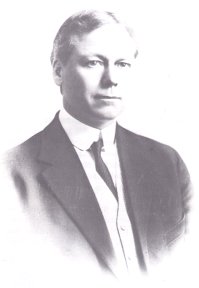 |
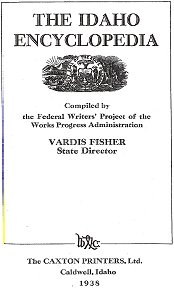 |
THE SWEETSER / BURROUGHS CONNECTION Lewis Hobart Sweetser was born in San Francisco on January 13, 1868. His father, Andrew Sweetser ran a prosperous California farming and ranching operation and went on to become one of the early cattle ranchers in Idaho's Cassia County. In the 1860s he and his partner, J. Q. Shirley brought a herd of cattle from California and soon became very successful cattle barons in the Raft River valley in an area close to present-day Malta. Young Lew and the rest of the Sweetser family resettled to this southern Idaho region in 1871, where they lived in a log cabin in their remote ranch for over three years. Eventually Shirley was replaced by James Pierce and Andrew's brother, John, to become the "Sweetser Brothers and Pierce."
Part I (Part II continues at ERBzine 1647)Lewis returned to California for his schooling in San Francisco's Urban School followed by one year at the University of California at Berkeley. He then enrolled in the Sheffield Scientific School at Yale, where he met the older brothers of Edgar Rice Burroughs -- George and Harry Burroughs of Chicago. He and the Burroughs boys became fast friends and were successful in their college courses and athletics -- participating in rowing, boxing, wrestling and track.
|
After graduation in 1889, Lew returned to the Sweetser Idaho ranch and the Burroughs brothers went to work at their father's American Battery Company in Chicago. Harry's desk job, in which he was surrounded by battery fumes, soon led to a serious lung condition and his doctor ordered a change of climate. Major George and Lew Sweetser's father helped establish them in the ranch business.In August and later in October of 1890, "Sweetser and Burroughs" made purchases of two 320-acre holdings from "Sweetser Brothers and Pierce." Soon George, Harry and Lew were working as cowpunchers on their ranch along the lower Raft River about 30 miles from the nearest railhead at American Falls. They named the ranch the Bar Y and were later given permission to establish a post office which they named Yale. Unfortunately summer drought and severe winters soon forced the trio to look for another venture to supplement their income.
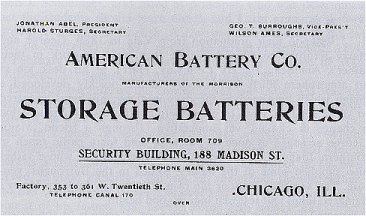
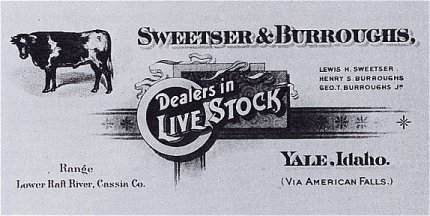
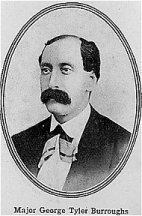
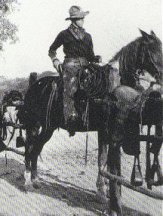
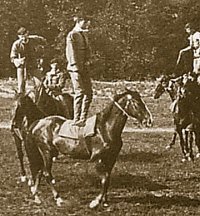
Their father, Major George T. Burroughs, sent fifteen-year-old Ed to join them in the spring of '91 and the young greenhorn experienced many adventures in the "wild west." He did ranch chores, rode the range, delivered mail and supplies from American Falls and developed a life-long love of horses and horsemanship. In the fall, Major Burroughs enrolled a reluctant Ed in Phillips Academy at Andover, but the exciting adventures he experienced were a profound maturing experience. George and Harry stayed in Idaho where they tried their hands at a variety of enterprises including gold dredging.
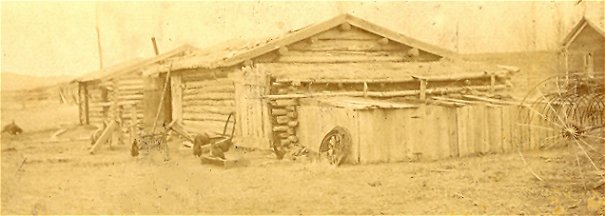 |
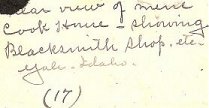 |
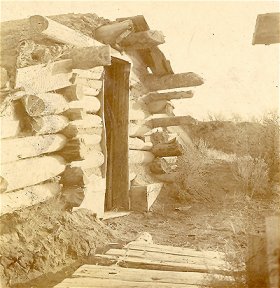 |
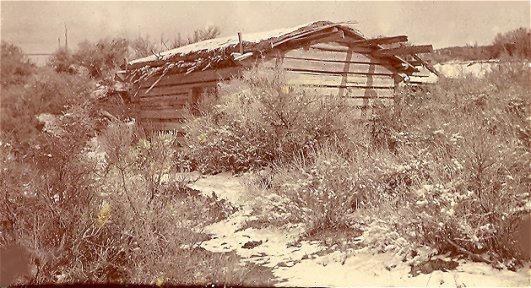 |
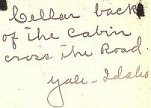 |
 |
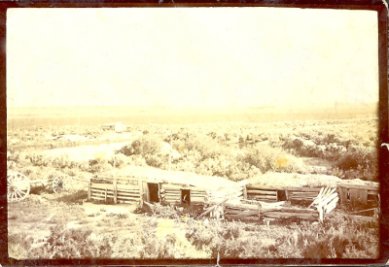 |
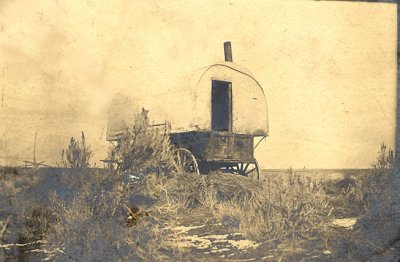 |
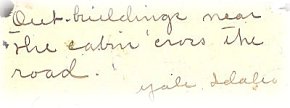 |
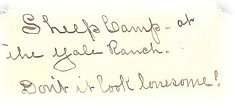 |
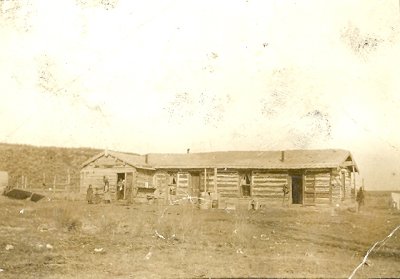 |
 |
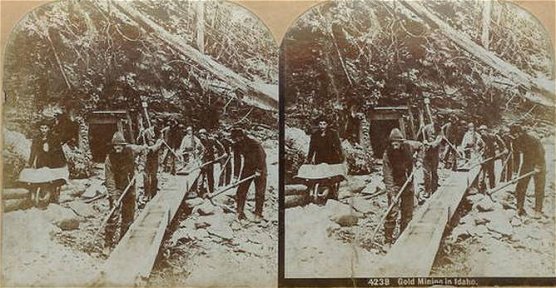
Gold Mining in Idaho
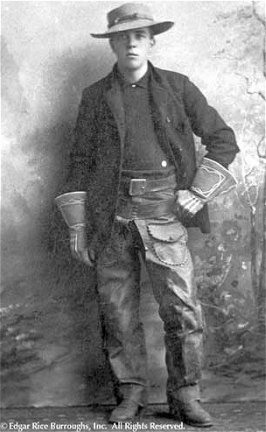
Ed Burroughs: The Teenage Cowboy |
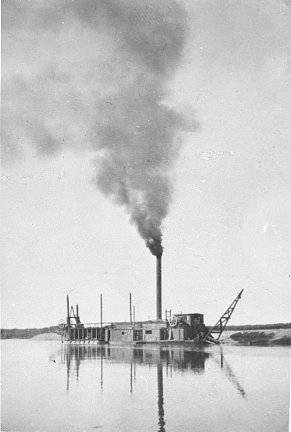
Arbus ~ Sweetser & Burroughs Gold Mining Dredge |
They couldn't help but notice that the banks of the Snake River were home to many prospectors laboriously panning the river's sands for gold. The inefficiency of these small-time mining endeavours drew the attention of the Yale graduates and within three years they put their engineering backgrounds to work. They built a dredge -- the Argus --to mine gold ore from the Snake river bottom. They also built two houseboats to accompany the dredge -- the largest, called El Nido (the nest), provided living quarters for themselves and families and later a smaller one for offices and the dredge crew. The main houseboat was an elaborate affair that contained sixteen rooms, including one large common room.
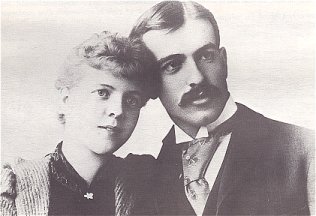
The Minidoka Museum displays a photo of this giant houseboat accompanied by a caption that reads: "IT WAS A BIG RIVER THEN . . . About 1890 Snake River provided a good living for gold dredge crews. The George Burroughs family lived in the upper level (five big rooms) of this houseboat, and the lower level was crew's quarters and office. The picture was taken near Yale where docks were installed. Burroughs' first location, in 1892, was at Raft River, from where he worked upstream. He took the dredge to Salmon after 1892 and worked it there. The houseboat was acquired by the Thad Ferrin family and they lived in it near Heyburn. When the boat was dismantled, part of the timbers were used in construction of the "old" Heyburn bridge."

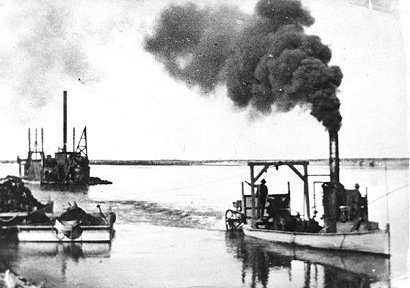
The Burroughs & Sweetser Tug
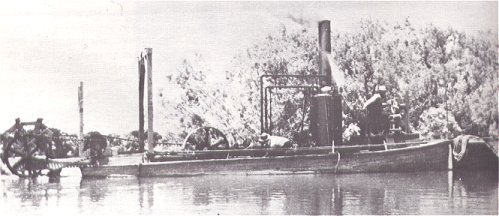
George was president and manager of the mining operation. The operation soon became quite efficient and successful. A nozzle on dredge would vacuum up riverbed gravel and send it through shaking sluices to separate out the finer material which would be passed over burlap tables to capture sand and gold. Mercury was then used to separate the gold which would be melted and molded into bars. The gold was sent to Boise and the waste material was thrown back into the river in slag heaps. The operation was so successful that they built a second dredge -- the Yale, which scooped up the ore with conveyor buckets. The Yale was based on an unprofitable stretch of the Snake and the eventually the company started to run into financial problems.
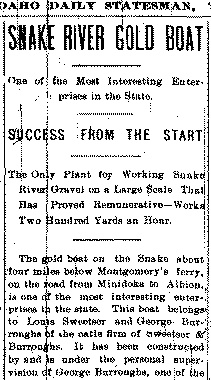
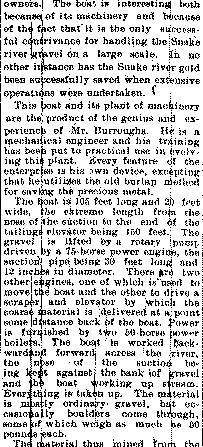
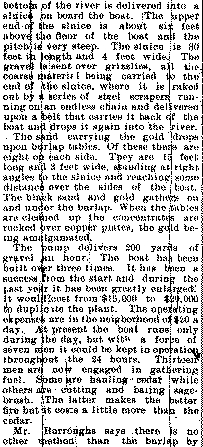
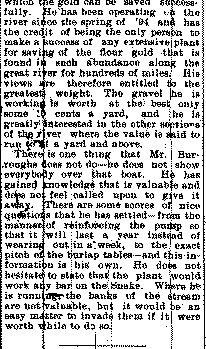 |
|
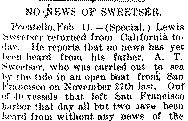
 |
|
|
ERB, Inc. & ERBzine References:
All photos ©Edgar Rice Burroughs, Inc.
~ ©Gloria Draper Sweetser Collection ~ ©Hillman Library
Danton Burroughs Tarzana Archives & ERB, Inc.
![]()

![]()
BILL
HILLMAN
Visit
our thousands of other sites at:
BILL
AND SUE-ON HILLMAN ECLECTIC STUDIO
ERB
Text, ERB Images and Tarzan® are ©Edgar Rice Burroughs, Inc.-
All Rights Reserved.
All
Original Work ©1996-2006/2010/2014/2018 by Bill Hillman and/or Contributing
Authors/Owners
All photos ©Edgar
Rice Burroughs, Inc. ~ ©Gloria Draper Sweetser Collection ~ ©The
Hillman Library
Not
for download or duplication.
No
part of this web site may be reproduced without permission from the respective
owners.